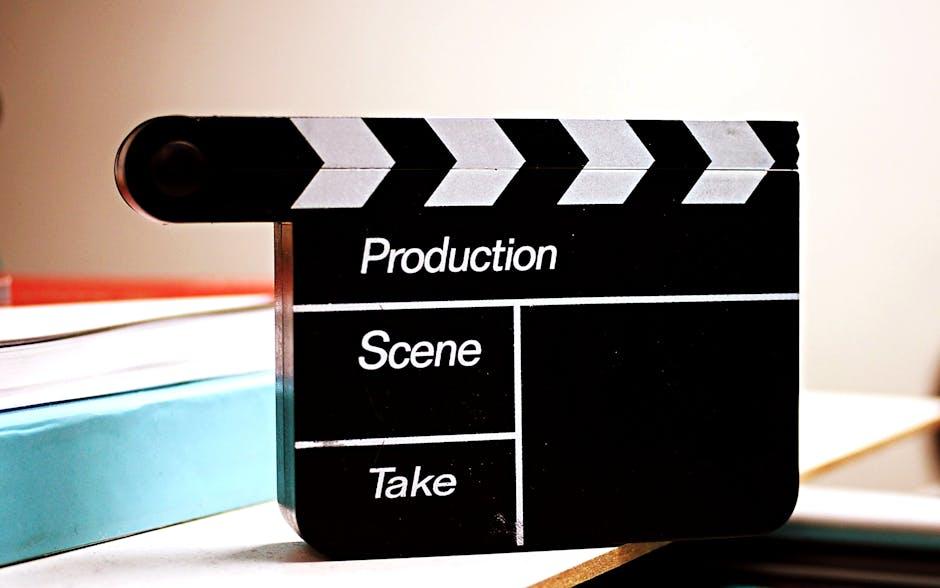In the realm of cinematic storytelling, the allure of miniatures has persisted as a pivotal tool in bridging the gap between imagination and reality. From the iconic starships of “Star Wars” to the intricate spacecraft of “Interstellar,” miniatures have played an indispensable role in crafting immersive visual experiences. This article delves into the enduring significance of miniatures in movie production, examining their evolution, technological integration, and the unique advantages they offer over digital effects. By analyzing key films and techniques, we uncover how these meticulously crafted models continue to captivate audiences and shape the future of filmmaking.
Crafting Realism: The Technical Artistry Behind Miniature Effects
The meticulous art of miniature effects has long been a cornerstone of cinematic realism, captivating audiences with its tangible authenticity. In the realm of filmmaking, miniatures serve as both a canvas and a tool, allowing creators to explore vast universes without the constraints of full-scale production. Attention to detail is paramount; each model is crafted with precision, from the weathered textures on a spaceship to the intricate architecture of a cityscape. This technical artistry involves a collaborative effort between designers, engineers, and artists, all working in harmony to ensure that every element appears convincingly real on screen.
Key aspects of crafting realism through miniatures include:
- Scale Accuracy: Maintaining proportionality to ensure seamless integration with live-action footage.
- Material Selection: Choosing the right materials to mimic the textures and colors of real-world counterparts.
- Lighting Techniques: Employing advanced lighting to highlight details and create depth, crucial for the illusion of size and distance.
- Camera Angles: Strategically selecting angles that enhance the illusion of grandeur and believability.
By mastering these techniques, filmmakers transform miniature models into immersive worlds, bridging the gap between imagination and reality.
 Miniatures Shaped Iconic Sci-Fi Landscapes”>
Miniatures Shaped Iconic Sci-Fi Landscapes”>
Historical Evolution: How Miniatures Shaped Iconic Sci-Fi Landscapes
The journey of miniatures in cinema is a testament to the blend of artistry and innovation that has defined the sci-fi genre. These meticulously crafted models have been pivotal in creating some of the most memorable landscapes in film history. Star Wars, with its iconic spaceships and alien terrains, set a benchmark in the late 1970s. The use of miniatures allowed filmmakers to transcend the limitations of technology at the time, providing audiences with visually stunning and believable worlds. The Death Star trench run, a sequence etched in cinematic lore, was brought to life through a detailed miniature model, showcasing how physical craftsmanship could evoke grandeur and tension.
- Blade Runner: The dystopian cityscape, with its towering skyscrapers and neon-lit streets, relied heavily on miniatures to create its immersive atmosphere.
- 2001: A Space Odyssey: The intricate models of spacecraft and the lunar surface set a new standard for realism in sci-fi films.
- Interstellar: Despite advancements in CGI, Christopher Nolan opted for miniatures to depict the Endurance spacecraft, achieving an unparalleled authenticity.
As digital effects became more prevalent, the tactile realism offered by miniatures continued to play a crucial role. Directors like Nolan have shown that, even in an era dominated by computer-generated imagery, the tangible presence of miniatures can enhance the storytelling experience, bridging the gap between imagination and reality.
Balancing Innovation: Integrating Miniatures with Modern CGI
In an era dominated by computer-generated imagery, the art of using miniatures remains a crucial tool in filmmaking, offering a tangible depth that CGI often struggles to replicate. Integrating miniatures with CGI allows filmmakers to harness the strengths of both mediums, creating visually stunning effects that feel both real and imaginative. This fusion can be seen in films like Interstellar, where the use of meticulously crafted models provided a foundation of authenticity, later enhanced by digital effects.
- Realism: Miniatures offer a tactile quality that grounds the digital elements in reality, providing a believable scale and texture.
- Cost-Effectiveness: Creating physical models can sometimes be more budget-friendly than generating complex CGI sequences from scratch.
- Creativity: The combination allows filmmakers to explore innovative storytelling techniques, merging the detailed artistry of miniatures with the limitless possibilities of CGI.
By embracing both traditional and modern techniques, directors and visual effects teams craft scenes that captivate audiences, balancing nostalgia with innovation.

Strategic Recommendations: Optimizing Miniature Use in Future Productions
To fully leverage the potential of miniatures in future productions, filmmakers should consider a blend of traditional craftsmanship and modern technology. Investing in skilled artisans who specialize in miniature creation can ensure the highest level of detail and authenticity. Additionally, integrating advanced CGI techniques with physical models can create seamless and immersive visuals that captivate audiences.
- Hybrid Approach: Combine physical miniatures with digital enhancements to maximize realism.
- Collaborative Teams: Foster collaboration between model makers, digital artists, and directors to align creative visions.
- Resource Allocation: Allocate budget efficiently to balance the cost of miniatures and digital effects.
- Training and Development: Encourage continuous learning for teams to stay updated with the latest techniques and technologies.
By strategically embracing these methods, productions can achieve a harmonious balance between the tangible and the digital, elevating storytelling to new heights.

